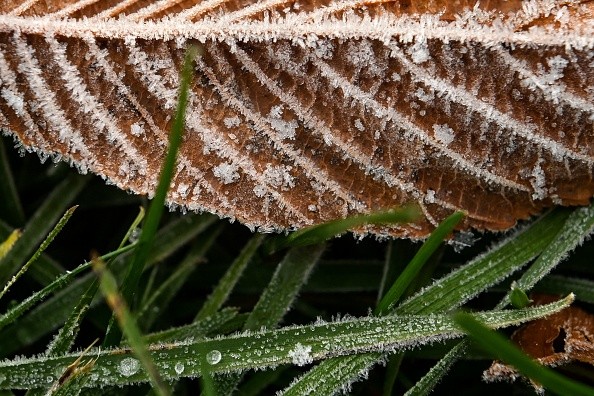For photosynthesis to occur and chlorophyll to be produced, plants require iron (II) ions (Fe2+).
A group of scientists from the East China University of Science and Technology in Shanghai has discovered that the iron in dead trees' leaves contributes to making up for this deficiency by converting Fe3+ to Fe2+ through charge transfer reactions.
The outcome was attained using a variety of spectroscopic methods, sheds light on the mechanisms underlying this valence state change and shows that soil-decomposed leaves are a significant source of the element Fe2+.
Fallen leaves help plants with their iron deficits
 (Photo : KIRILL KUDRYAVTSEV/AFP via Getty Images)
(Photo : KIRILL KUDRYAVTSEV/AFP via Getty Images)

Iron undergoes valence state changes during biological events as a result of charge transfer during a procedure known as chelation, according to research conducted by a team led by Haiping Fang, as per Physics World.
Possible charge transfer pathways for this process also provide a direct transfer of charge between donor atoms to cations, which occurs between Fe3+ and certain enzymes made in plant roots.
The non-covalent interaction between cations and electron-rich aromatic (organic) ring structures is known as the cation-interaction, and it directly transfers energy.
In their recent work, the researchers saw the valence state of iron transition from Fe3+ to Fe2+ in tea tree, wintersweet, and other leaves using X-ray photoelectron spectroscopy (XPS), Fourier transform infrared (FT-IR), and ultraviolet-visible (UV-vis) spectroscopy.
These findings demonstrated that hydrated iron cations interact strongly with compounds that have aromatic rings in the leaves.
The most stable adsorption sites for hydrated Fe3+ cations were found to be in regions with hydroxyl groups and aromatic structures, according to a separate theoretical investigation using density functional calculations.
Also Read: Scientist Reveals a New Way to Measure Plants' Stress
Plants need iron for proper development
For plants to develop properly, iron is a crucial micronutrient.
Without it, plants cannot complete their life cycle because it is essential for the synthesis of chlorophyll as well as other enzymatic and metabolic processes, as per Seipasa.
Iron chlorosis, a sign of iron insufficiency, is brought on by limited availability of iron in a form that can be taken in by plants rather than a shortage of iron in the soil.
High-quality, highly soluble, and stable iron chelates must be used in combination with other approaches to this issue.
In soils that have a high concentration of carbonates and bicarbonates, which lessen the solubility and mobility of iron, plants cannot absorb the element.
Iron chlorosis isn't brought on by a deficiency in the soil; rather, it's a result of the iron being in a condition that the plant might not absorb.
One of the elements with the greatest global abundance is iron. Although it is found in most soils, it is locked and insoluble, so plant roots cannot access it.
Iron and the other micronutrients' availability to plants is influenced by soil pH.
Iron availability to plants will increase with soil acidity because the quantity of absorbable iron reduces as soil alkalinity rises.
Since it is challenging to alter the pH of soil, iron chelates must typically be used.
In this regard, it is crucial to emphasize that no iron salt-based fertilizer can be applied, as it quickly precipitates and would increase the soil's already abundant iron content without providing it in soluble form.
Related Article: Grass Clippings are Better Than Fertilizer for Growing Healthy Blueberries
© 2024 NatureWorldNews.com All rights reserved. Do not reproduce without permission.

![Climate Change is Reducing Dust Levels Worldwide as Arctic Temperature Warms [Study]](https://1471793142.rsc.cdn77.org/data/thumbs/full/70320/280/157/50/40/climate-change-is-reducing-dust-levels-worldwide-as-arctic-temperature-warms-study.jpg)


![Tsunami Hazard Zones: New US Map Shows Places at Risk of Flooding and Tsunamis Amid Rising Sea Levels [NOAA]](https://1471793142.rsc.cdn77.org/data/thumbs/full/70325/280/157/50/40/tsunami-hazard-zones-new-us-map-shows-places-at-risk-of-flooding-and-tsunamis-amid-rising-sea-levels-noaa.jpg)
